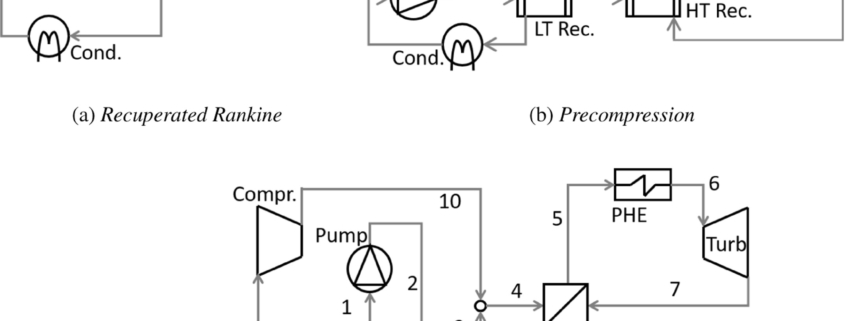New SCARABEUS paper by University of Seville discusses the benefits obtained from utilizing Carbon Dioxide – Sulphur Dioxide mixtures in (supercritical) Recompression cycles
The latest SCARABEUS research carried out by the team at University of Seville has just been published in Applied Thermal Engineering journal. Starting off from previous research by the the same partner, this paper provides a discussion on further efficiency gains that can be attained when Carbon Dioxide is blended with Sulphur Dioxide in supercritical or transcritical power cycles, with boundary conditions representative of those in a Concentrated Solar Power plant. The paper reveals that, unlike with other dopants tested previously by the consortium, this mixture performs best when in a transcritical Recompression cycle.
The paper is available in Open Access on the publisher’s website (link). Check the abstract below:
This paper investigates the interest and potential of using working fluids based on Carbon and Sulpur Dioxide mixtures (CO2-SO2) in a transcritical Recompression cycle. In order to assess the actual thermodynamic potential of the concept proposed, the influence of dopant (SO2) content is assessed for two different turbine inlet temperatures (550ºC and 700ºC). The results obtained are compared with other CO2 mixtures already proposed in literature (CO2– C6F6 and CO2-Ti Cl4) and for two alternative cycle layouts (Recuperated Rankine and Precompression).
The results pf the analysis reveal that, at high ambient temperature, the Recompression cycle operating on CO2-SO2, with Sulphur Dioxide content between 20% and 30%(v), is a very interesting option for Concentrated Solar Power plants, able to achieve thermal efficiencies 45% and ¿51% at 550ºC and 700ºC respectively. At a minimum cycle temperature of 50ºC, the proposed configuration leads to thermal efficiency gains of 6% and 2% with respect to the Brayton and Recompression cycles working on pure CO2. This performance enhancement of the Recompression cycle with CO2-SO2 is comparable to or higher than that enabled by other CO2 mixtures proposed in literature, but with significantly higher specific work (smaller footprint) and temperature rise across the solar receiver (lower installation costs).





